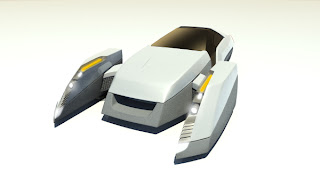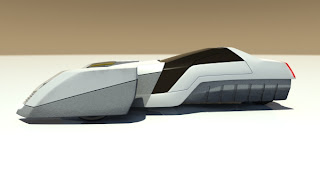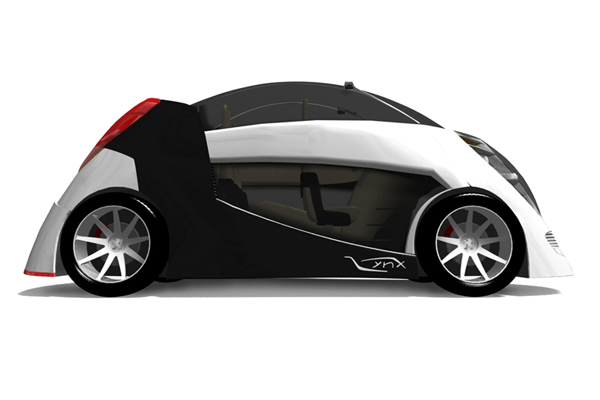 5th Peugeot Design Contest
5th Peugeot Design ContestTheme: "Design a Peugeot for the megalopolis of the future"
The megalopolis of tomorrow...
When one thinks of the future metropolis, the first picture that comes to one's mind is the stressed, energic urban life - tight schedules, dense traffic, high rise buildings. But the future city experience is not just about this non-stopping frenzy. It is also about escape, leisure and family.
The Concept
The new Peugeot Metropole is designed for the hard working familiy that likes to let go of the stress when they have a chance. Weekends, for example, are a perfect opportunity to spend quality time with the kids - go for a walk or have a pic-nic in the outskirts.
The MPV bodystyle provides the medium/large family the space, flexibility and sustainability it needs.

The Car
The Metropole has approximately 80% glazed surface, making it possible to have full visibility and road experience. The roof glass uses liquid crystal opacification and can be adjusted with the touch of a button, if less luminosity is desired.
Two large sliding doors open in opposite directions, letting the outside completely in, enhancing the experience of the MPV, not only while it is in motion, but also when stopped.

The maximum number of seats is 7, but the flexibility of the Metropole allows several seat configurations - for example, 4 seats facing eachother with a small table in the middle, or create more cargo space by folding away the second and third rows of seats.
Traffic in the city can be very stressing sometimes, so the Metropole has two storage spaces in the back, accessible from the outside, designed to carry one Segway "Human Transporter" each - you can leave your Metropole in a parking building and move around the city in your "Human Transporter".
The Metropole is equipped with "drive-by-wire" technology, which allows the steering wheel to be assigned either to the left or the right seat in the front row. This can be done by unlocking the position of the steering wheel head, which is attached to the central command unit through an articulated arm that becomes flexible when the "unlock" button is pressed. The head can then be positioned in front of the other seat and locked again. This is particularly useful to exchange drivers without having to get out of the vehicle or jump from one seat to another.

Sustainability
The Peugeot Metropole is designed with several integrated systems that make it environmentally friendly:
The whole interior rests on a flat platform that stretches from one end to another. Beneath it a Hydrogen Fuel Cell powered engine can be found. With no internal combustion engines, the Metropole is a CO2 emission-free vehicle.
The glass roof has an integrated Photovoltaic Solar Panel. The energy obtained through this panel can be used to operate electronic equipment as well as a supplement for the engine.
The PV panel also works as a solar shade, even when the opacity of the roof glass is set to "off", because of its translucid result.
The whole interior surface contributes to the optimization of thermal comfort inside the car through the use of micro-encapsulated Phase Change Materials (PCM's).
Water, for instance, freezes at 0ºC, releasing energy (i.e. heat) in the process. The reverse happens when it melts again - it absorbs energy in order to change its state. PCM's also have freezing/melting points, but located around 24ºC and 30ºC, depending on its specifications. As the interior temperature of the Metropole drops below the freezng point of the PCM, it releases heat to stabilize the temperature. The PCM absorbs the energy again if the interior temperature rises above its melting point, avoiding too high, and uncomfortable, temperatures.
The use of this nano-technology partially substitutes other climatization systems, such as air-conditioning, thus saving energy for engine performance and mileage.
(more about PCM's na Wikipedia )

All this advanced sustainable technology, working together with efficient and friendly design, make the Peugeot Metropole the perfect choice for the future urban family.































 The Peugeot Lynx has an
The Peugeot Lynx has an 


 The Peugeot of my dreams for the near future has ground-breaking design and technology, with a
The Peugeot of my dreams for the near future has ground-breaking design and technology, with a 